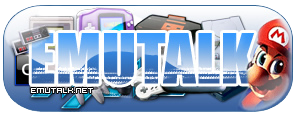Iconoclast
New member
The old version of this thread was deleted. This new version contains my CHM help file, explaining how to emulate all supported N64 games optimally (with minimal issues).
I admit, I will also be copying Project64's GameFAQ and BigHead's configuration list, but I am not saying I will just copy and paste information from these resources into my CHM and call it 'my' work. I double-check these things. For example, BigHead's list says that the best emulator for Quest 64 is either Project64 or 1964, and that the best plugins are Jabo's and Rice's. I spent about one hour of time configuring this game, and I found that using Project64 v1.4, or an older version of Project64, will fix the pausing core issue for this game, and that you should really use glN64 as your graphics plugin. (I hear glN64 doesn't work on Project64...could someone tell me about this?)
Post in this thread if you have any questions, comments, or especially corrections (preferrably those that would be helpful) on my work. If you can find any mistakes I made in emulation advice, your name goes on the credits list.
NOTE: All links to the file "N64EmuDoc.zip" lead to the same version. I am not keeping multiple attachments on different versions.
I admit, I will also be copying Project64's GameFAQ and BigHead's configuration list, but I am not saying I will just copy and paste information from these resources into my CHM and call it 'my' work. I double-check these things. For example, BigHead's list says that the best emulator for Quest 64 is either Project64 or 1964, and that the best plugins are Jabo's and Rice's. I spent about one hour of time configuring this game, and I found that using Project64 v1.4, or an older version of Project64, will fix the pausing core issue for this game, and that you should really use glN64 as your graphics plugin. (I hear glN64 doesn't work on Project64...could someone tell me about this?)
Post in this thread if you have any questions, comments, or especially corrections (preferrably those that would be helpful) on my work. If you can find any mistakes I made in emulation advice, your name goes on the credits list.
NOTE: All links to the file "N64EmuDoc.zip" lead to the same version. I am not keeping multiple attachments on different versions.
Last edited:
